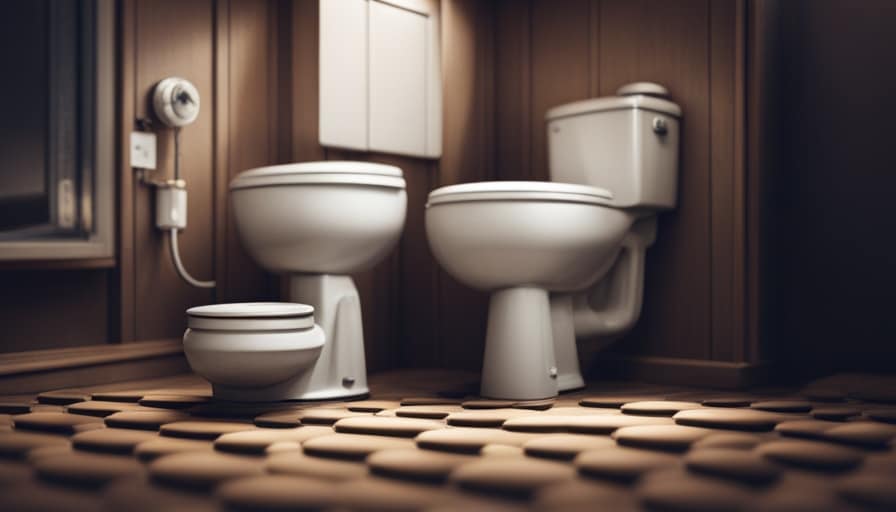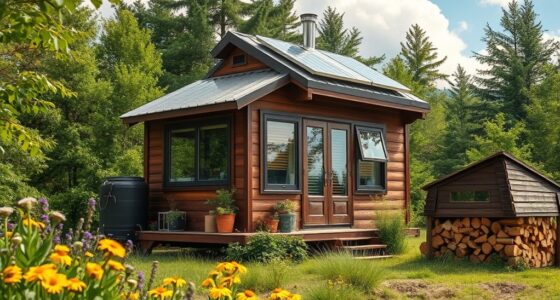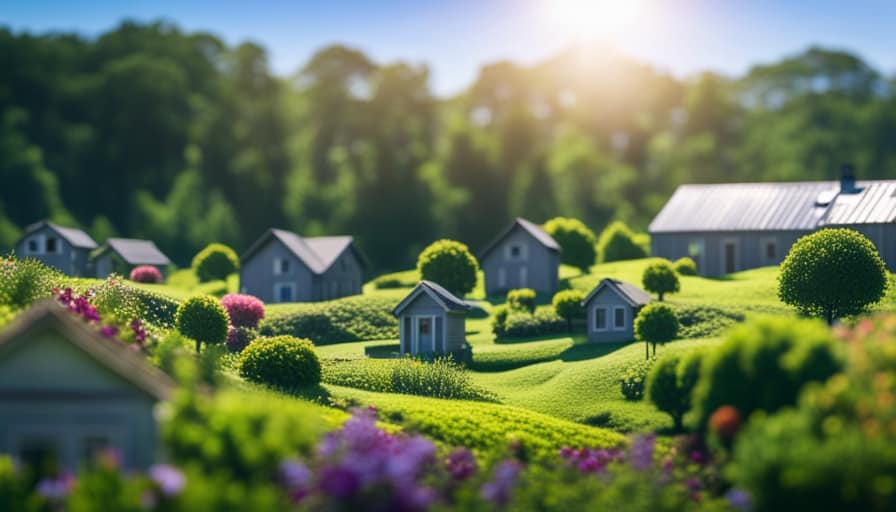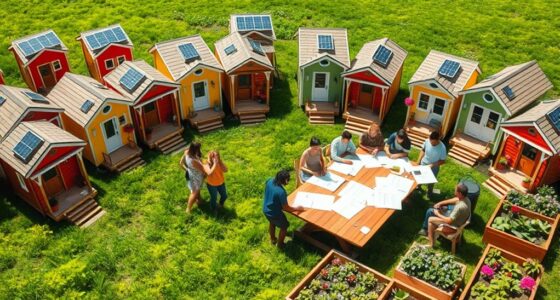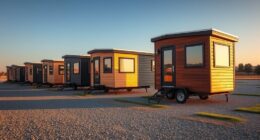Are you searching for the ideal city to accommodate your tiny home? Stop your search now! We have put together a list of the top 10 cities that cater to the needs of tiny home enthusiasts like ourselves.
From the charm of Fresno to the scenic retreat of Sheridan, these cities offer the ideal combination of affordability, convenience, and community.
Get ready to embrace minimalism and explore the benefits of tiny home living in these amazing locations. Let’s dive in and discover your future tiny home paradise!
Key Takeaways
- Rising cost of housing in Portland has led to the popularity of tiny homes as a more affordable option.
- Portland has regulations that support the growth of the tiny home movement, allowing for tiny homes on wheels that meet safety standards.
- Spur offers an affordable cost of living and a thriving tiny home community, with a strong sense of community among residents.
- Spur promotes an eco-friendly lifestyle, with sustainable building practices, renewable energy sources, and efficient waste management systems.
Portland: A Haven for Tiny Home Living
We love how Portland embraces the concept of tiny home living, making it a haven for those seeking a minimalist lifestyle.
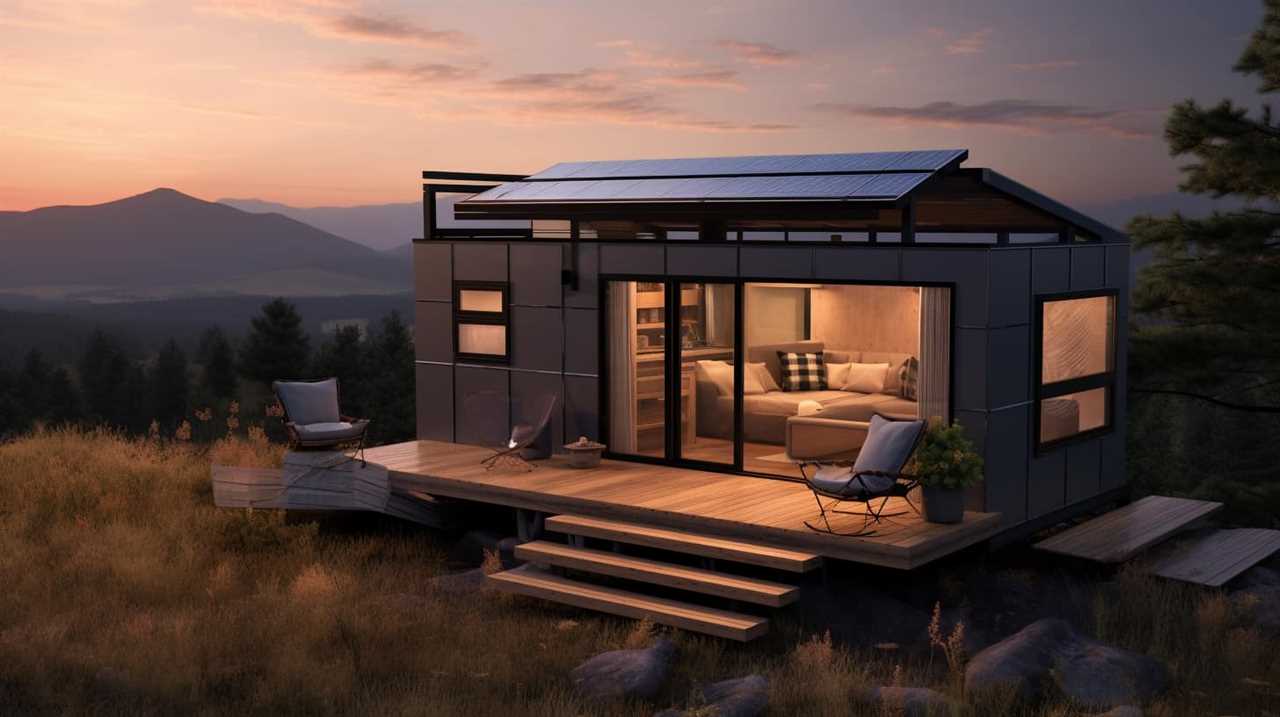
The cost of housing in Portland has risen significantly in recent years, making it difficult for many people to find affordable options. However, tiny homes offer a solution to this problem. With their smaller size, they’re more affordable to build and maintain than traditional houses.
Portland has also implemented regulations to support the growth of the tiny home movement. These regulations include allowing tiny homes on wheels, as long as they meet certain safety standards. Additionally, there are designated tiny home communities and neighborhoods in Portland, providing a sense of community and support for those who choose to live in tiny homes.
Spur: The Perfect Small Town for Tiny Home Enthusiasts
Spur, Texas, is a great destination for tiny home enthusiasts for several reasons.
Firstly, it has a thriving tiny home community with like-minded individuals.
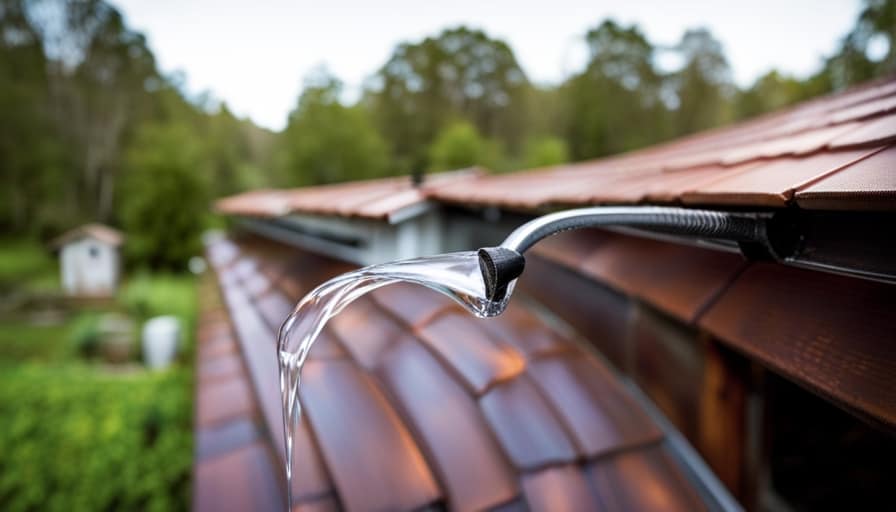
Additionally, the cost of living in Spur is significantly lower compared to larger cities, making it an attractive option for those looking to downsize.
Lastly, Spur is known for its commitment to sustainability and eco-friendly practices, providing an ideal environment for those who value living in harmony with nature.
Spur’s Tiny Home Community
Located in the heart of West Texas, Spur offers a thriving community for tiny home enthusiasts to embrace a simpler way of living.
The benefits of tiny living in Spur are numerous:
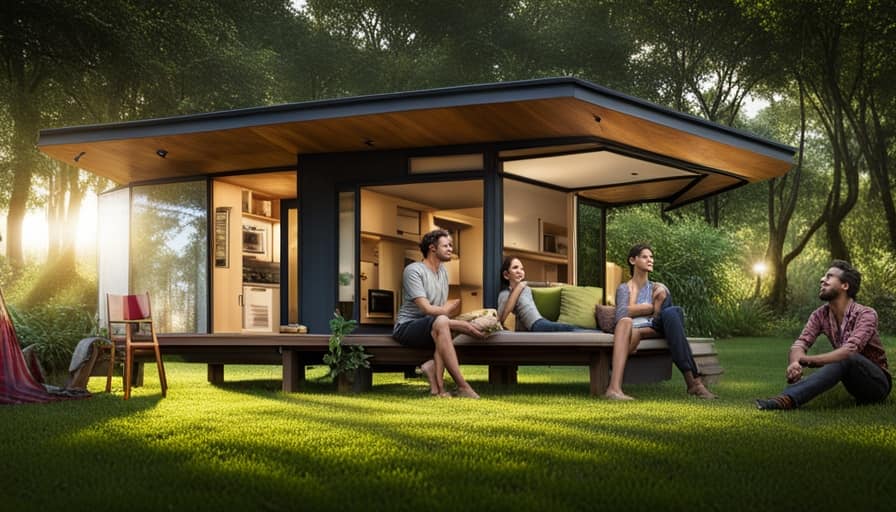
-
Affordability: With lower housing costs and utility expenses, tiny homes in Spur allow residents to save money and live within their means.
-
Sense of Community: Spur’s tiny home community fosters a strong sense of belonging and camaraderie among its residents, who often gather for social events and support one another.
-
Eco-Friendly Lifestyle: Tiny homes promote sustainable living by reducing energy consumption and minimizing environmental impact.
-
Close Proximity to Nature: Spur’s scenic surroundings offer ample opportunities for outdoor activities, such as hiking, biking, and stargazing.
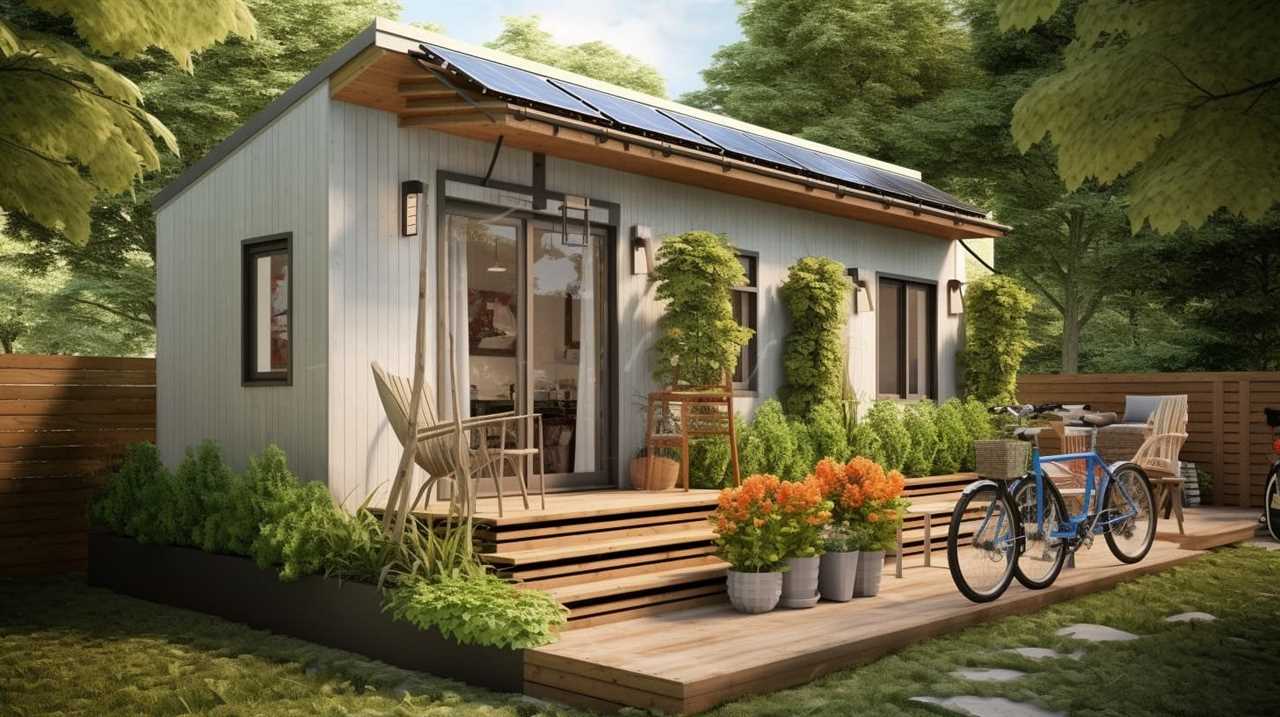
In Spur’s tiny home community, residents can enjoy a fulfilling and meaningful life while minimizing their ecological footprint.
Cost of Living
Occasionally, but, living in Spur’s tiny home community can be surprisingly affordable. The cost of living in Spur is significantly lower compared to many other cities in the United States, making it an attractive option for those seeking affordability.
The low cost of housing, coupled with reduced utility bills and maintenance expenses, allows residents to save money and improve their quality of life. Additionally, the small-town atmosphere and tight-knit community create a sense of belonging and contribute to a higher quality of life. Residents can enjoy a slower pace of life, access to nature, and a strong sense of community.
Living affordably in Spur’s tiny home community provides an opportunity for individuals to simplify their lives and focus on what truly matters. Transitioning into the next section, Spur’s commitment to sustainability and eco-friendly practices further enhances the quality of life for its residents.
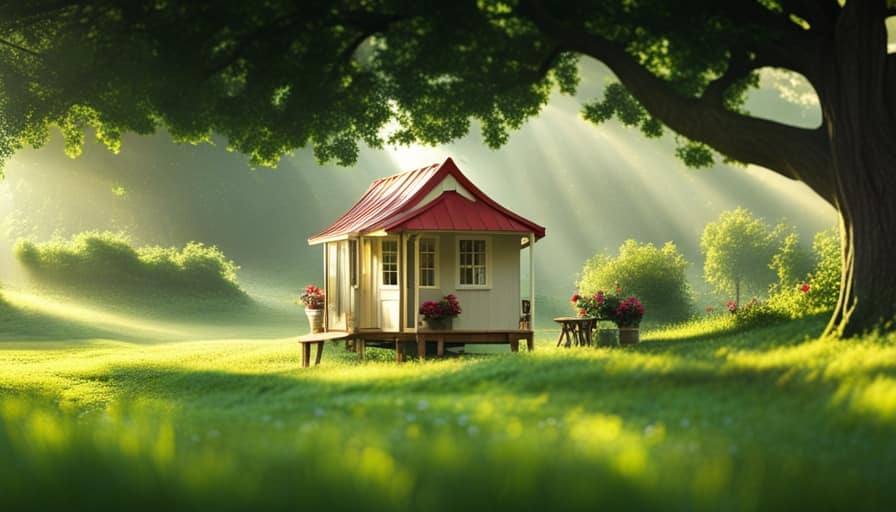
Sustainability and Eco-Friendly
We love the sustainability and eco-friendly initiatives in Spur, making it the perfect small town for tiny home enthusiasts. Here are some reasons why:
-
Sustainable Building Practices: Spur encourages sustainable building practices by promoting the use of eco-friendly materials and construction methods. This ensures that tiny homes are built with minimal environmental impact.
-
Renewable Energy Sources: The town of Spur is committed to harnessing renewable energy sources. Solar panels and wind turbines are commonly used to power tiny homes, making them energy-efficient and reducing carbon footprints.
-
Recycling and Waste Management: Spur has a well-established recycling program and efficient waste management system. Residents are encouraged to reduce, reuse, and recycle, further promoting sustainability within the community.
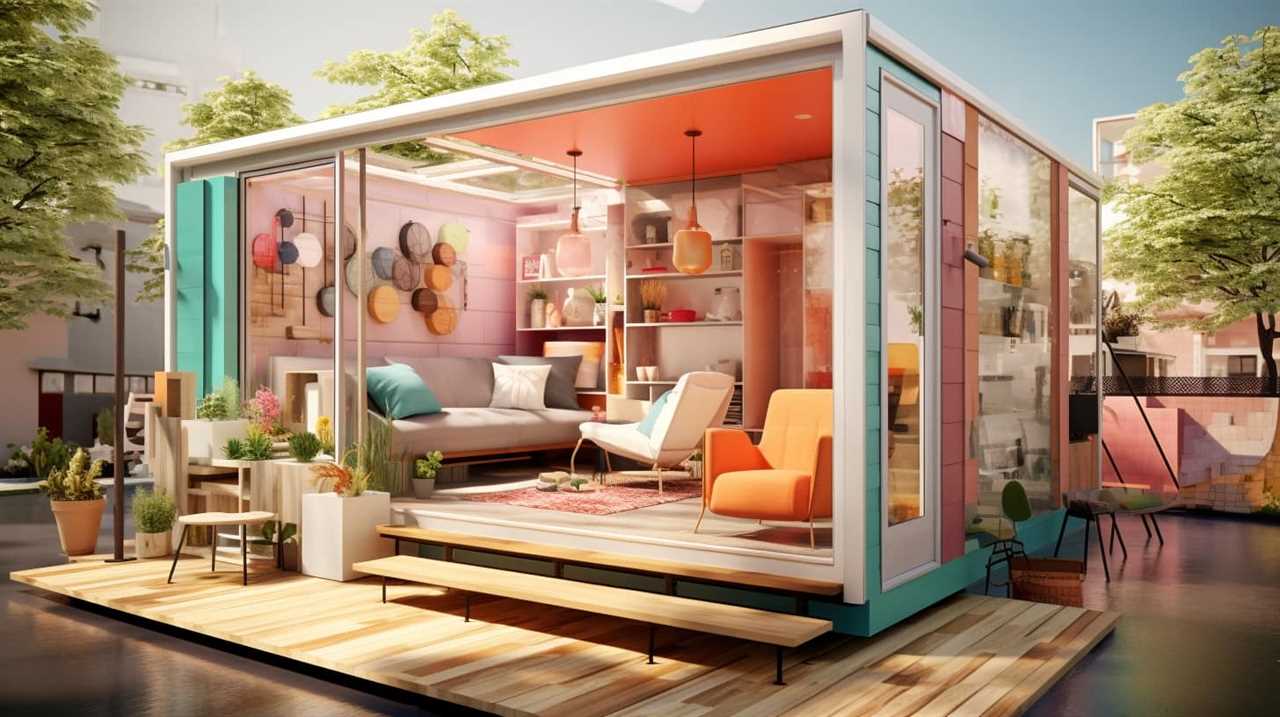
-
Community Gardens and Local Food: Spur promotes local food production through community gardens, allowing residents to grow their own fruits and vegetables. This not only promotes sustainable agriculture but also creates a sense of community.
With its focus on sustainable living, Spur provides an ideal environment for tiny home enthusiasts who value eco-friendly practices.
Speaking of tiny home living, let’s now explore the charm of tiny home living in central California’s Fresno.
Fresno: Discover the Charm of Tiny Home Living in Central California
Let’s explore the charm of tiny home living in Central California’s Fresno. Fresno offers an affordable cost of living, making it an attractive option for those looking to downsize and simplify their lives. With a tight-knit community and strong community support, Fresno provides a welcoming environment for tiny home enthusiasts.

| Cost of Living | Affordable |
| Community Support | Strong |
The cost of living in Fresno is significantly lower compared to other cities in California, allowing residents to save money and invest in their tiny homes. Additionally, the community in Fresno is known for its support and acceptance of alternative housing options, including tiny homes. This sense of community support creates a positive and inclusive atmosphere for tiny home dwellers.
Transitioning to the next section, let’s now explore Ithaca, a city that embraces minimalism and is also known for its tiny home-friendly environment.
Ithaca: Embrace Minimalism in This Tiny Home-Friendly City
Embracing minimalism and fostering a tiny home-friendly environment, Ithaca offers a unique experience for those seeking a simpler way of life. Here are some reasons why Ithaca is the perfect city for those who want to embrace simplicity and explore tiny home design ideas:
-
Progressive Community: Ithaca is known for its progressive and environmentally conscious community, making it an ideal place for tiny home enthusiasts looking to connect with like-minded individuals.
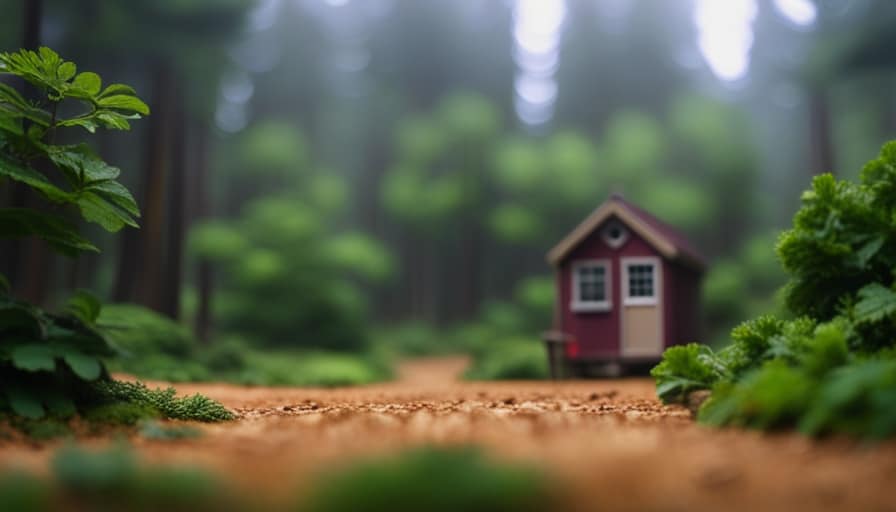
-
Natural Beauty: Surrounded by stunning natural landscapes, Ithaca provides the perfect backdrop for tiny homes, allowing residents to enjoy the beauty of nature right at their doorstep.
-
Thriving Farmers Markets: With a strong emphasis on local and sustainable living, Ithaca boasts vibrant farmers markets, providing tiny home dwellers with easy access to fresh and organic produce.
-
Innovative Design Ideas: Ithaca’s creative community fosters innovative design ideas, inspiring tiny home owners to explore unique and functional living spaces.
In Ithaca, simplicity and creativity go hand in hand, making it an ideal city for those looking to embrace minimalism and tiny home living.

Rockledge: Experience the Benefits of Tiny Home Living in Florida
Experiencing the benefits of tiny home living in Florida, Rockledge offers a warm climate and a close-knit community for those seeking a simpler and more sustainable lifestyle. Rockledge is home to several reputable tiny home builders, who can help turn your dream of living in a tiny home into a reality. These builders have extensive experience and expertise in constructing tiny homes that maximize space and functionality while maintaining a high level of craftsmanship.
When it comes to zoning regulations, Florida has made significant progress in accommodating tiny homes. While regulations can vary between cities and counties, Rockledge has embraced the tiny home movement and has established zoning regulations that allow for the legal placement of tiny homes on residential lots. This means that you can enjoy the benefits of tiny home living in Rockledge without having to worry about legal hurdles.
Sheridan: A Scenic Retreat for Tiny Home Dwellers
Sheridan offers a range of affordable housing options for tiny home dwellers, making it an attractive destination for those seeking a more budget-friendly lifestyle.
The natural beauty and serenity of the area provide a scenic retreat, with stunning landscapes and outdoor recreational opportunities right at your doorstep.

Additionally, the community in Sheridan is known for its strong support and resources for tiny home owners, creating a welcoming environment for those looking to embrace the tiny living movement.
Affordable Housing Options
Finding affordable housing options in Sheridan is a priority for us tiny home dwellers. Luckily, Sheridan offers a range of options that fit our budget and lifestyle. Here are some key factors to consider:
-
Sustainable building materials: Many housing options in Sheridan are built using sustainable materials, ensuring that our tiny homes are eco-friendly and energy-efficient.
-
Zoning regulations: Sheridan has lenient zoning regulations that allow for the establishment of tiny home communities, giving us the freedom to live in close-knit communities with like-minded individuals.
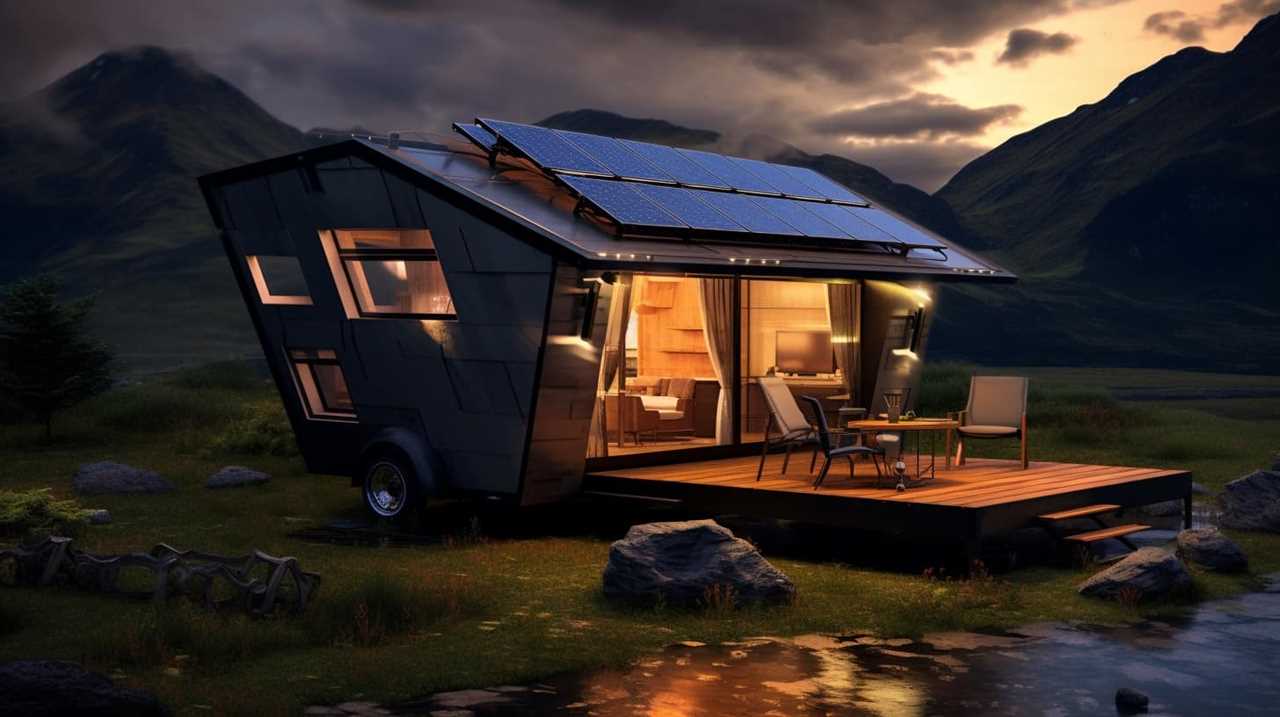
-
Cost-effective land: Land prices in Sheridan are relatively affordable, allowing us to find suitable plots to park our tiny homes without breaking the bank.
-
Low utility costs: Sheridan’s natural resources and mild climate make it an ideal location for low utility costs, allowing us to save money on energy bills.
With these affordable housing options, we can enjoy all the natural beauty and serenity that Sheridan has to offer.
Transitioning into the next section, let’s explore the breathtaking landscapes and peaceful atmosphere that make Sheridan a true scenic retreat.
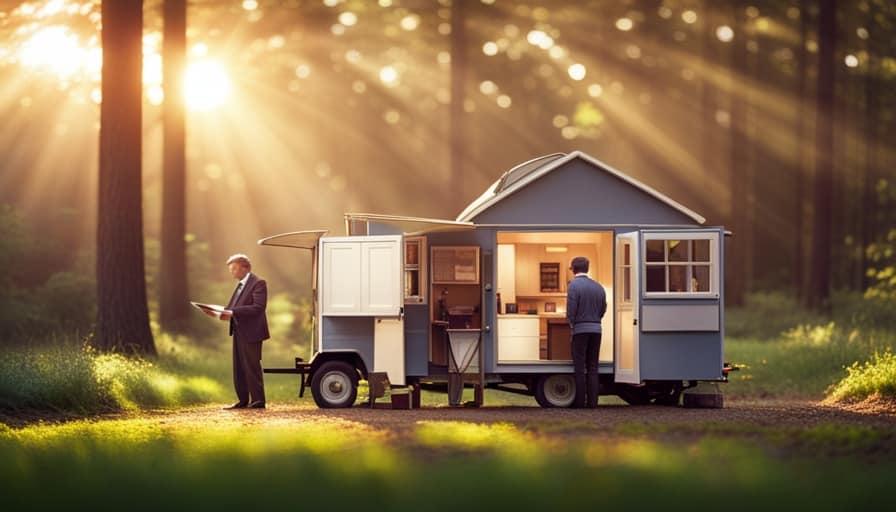
Natural Beauty and Serenity
As we explore the natural beauty and serenity of Sheridan, we can’t help but feel a sense of peace and tranquility. This small city in Wyoming is a hidden gem for those seeking a natural retreat and a peaceful escape from the hustle and bustle of city life. Surrounded by breathtaking landscapes and scenic views, Sheridan offers a haven for nature lovers and outdoor enthusiasts.
One of the highlights of Sheridan is its proximity to several natural retreats, such as the Bighorn National Forest and the Cloud Peak Wilderness. These areas provide endless opportunities for hiking, camping, fishing, and wildlife spotting. In addition, the city itself boasts well-maintained parks and green spaces, offering residents and visitors a chance to unwind and connect with nature.
To emphasize the beauty of Sheridan’s natural surroundings, let’s take a look at the following table:
| Natural Retreats in Sheridan |
|---|
| Bighorn National Forest |
| Cloud Peak Wilderness |
| City parks and green spaces |
The serene environment of Sheridan not only offers a peaceful escape, but it also provides a strong sense of community and support for tiny home dwellers. From local organizations promoting sustainable living to resources for off-grid living, Sheridan has a thriving community that embraces the tiny house movement.

Community Support and Resources
We have discovered that community support and resources are essential for tiny home dwellers, as they provide the necessary tools and assistance to thrive in this unique lifestyle. When it comes to community engagement, Sheridan offers a welcoming environment for tiny home dwellers. Residents are encouraged to participate in community events and contribute to the overall well-being of the town.
Additionally, zoning regulations in Sheridan are favorable for tiny home owners, allowing them to legally park their homes and enjoy the benefits of living in this scenic retreat. The town also provides resources such as workshops and educational programs to help tiny home dwellers navigate the challenges of this lifestyle.
With such strong community support and accessible resources, Sheridan truly stands out as an ideal place for tiny home living.
As we transition into the next section about Guyton, it’s worth noting that this Georgia gem offers affordable options for those looking to embrace the tiny home movement.
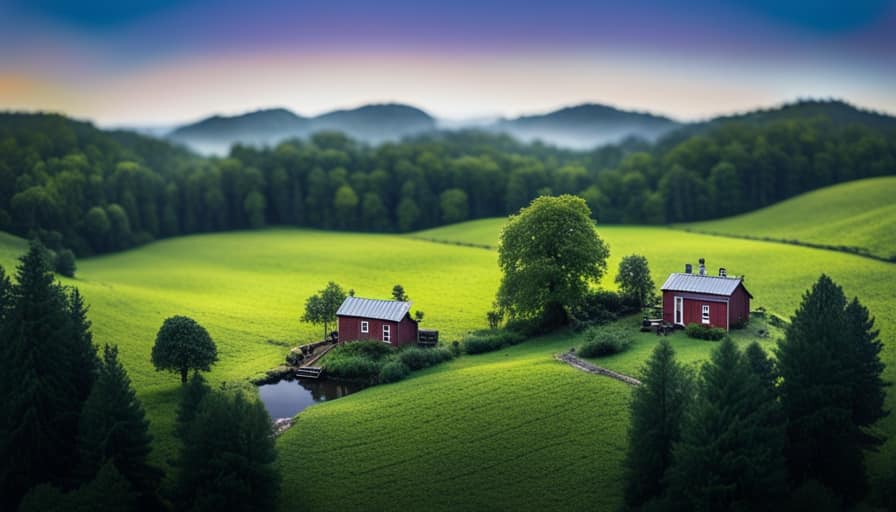
Guyton: Find Affordable Tiny Home Options in This Georgia Gem
We discovered numerous affordable tiny home options in this Georgia gem, Guyton. This charming city offers a range of housing options that are perfect for those seeking an affordable living solution.
Guyton provides a welcoming community with a strong emphasis on affordable housing and community resources. The city is dedicated to providing its residents with a high quality of life, offering a variety of services and amenities to meet their needs.
There are numerous community resources available to residents, including parks, libraries, and recreational facilities. These resources contribute to the overall well-being of the community and make Guyton an attractive place to live.
With its affordable housing options and abundant community resources, Guyton is an ideal location for those looking to embrace the tiny home lifestyle.
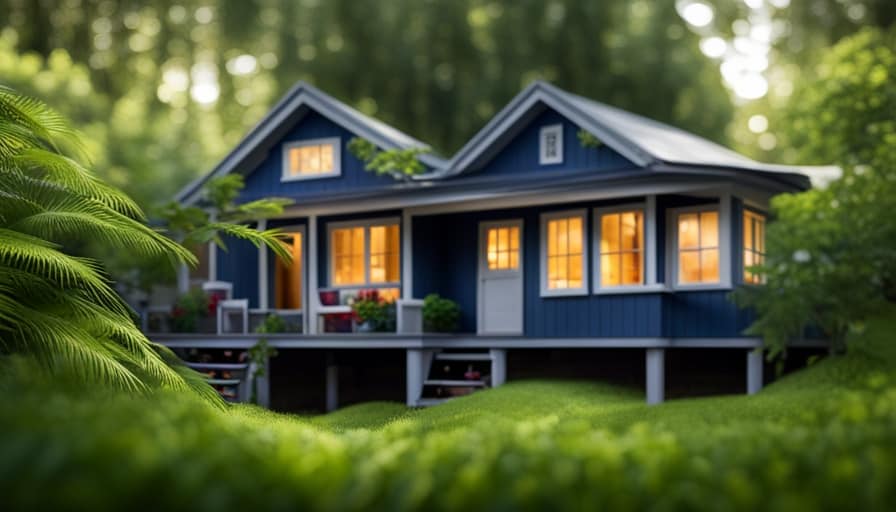
Colorado Springs: Explore the Rocky Mountains in a Tiny Home
Let’s explore the breathtaking Rocky Mountains in a tiny home in Colorado Springs. This charming city, nestled at the foot of Pikes Peak, offers the perfect blend of small-town charm and outdoor adventure.
Here’s what you can expect when you choose Colorado Springs as your tiny home destination:
-
Spectacular hiking trails: Lace up your boots and explore the endless trails that wind through the Rocky Mountains. From gentle strolls to challenging hikes, there’s something for everyone.
-
Thrilling outdoor activities: Get your adrenaline pumping with activities like rock climbing, mountain biking, and white-water rafting. Colorado Springs is an outdoor enthusiast’s paradise.
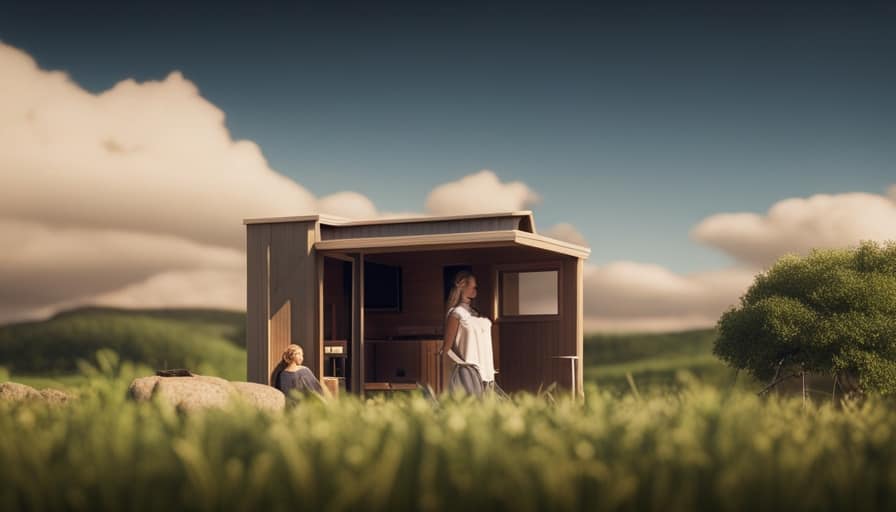
-
Stunning natural beauty: Immerse yourself in the awe-inspiring landscapes of the Rocky Mountains. Marvel at towering peaks, crystal-clear lakes, and vibrant wildflowers.
-
Quaint downtown area: After a day of adventure, unwind in Colorado Springs’ charming downtown. Explore local shops, dine at cozy restaurants, and soak up the friendly atmosphere.
Come and experience the outdoors and small-town charm of Colorado Springs from the comfort of your tiny home.
Clearwater: Enjoy Coastal Living in a Tiny Home Paradise
One of the top cities to enjoy coastal living in a tiny home paradise is Clearwater, where we can relax on white sandy beaches and soak up the sun.
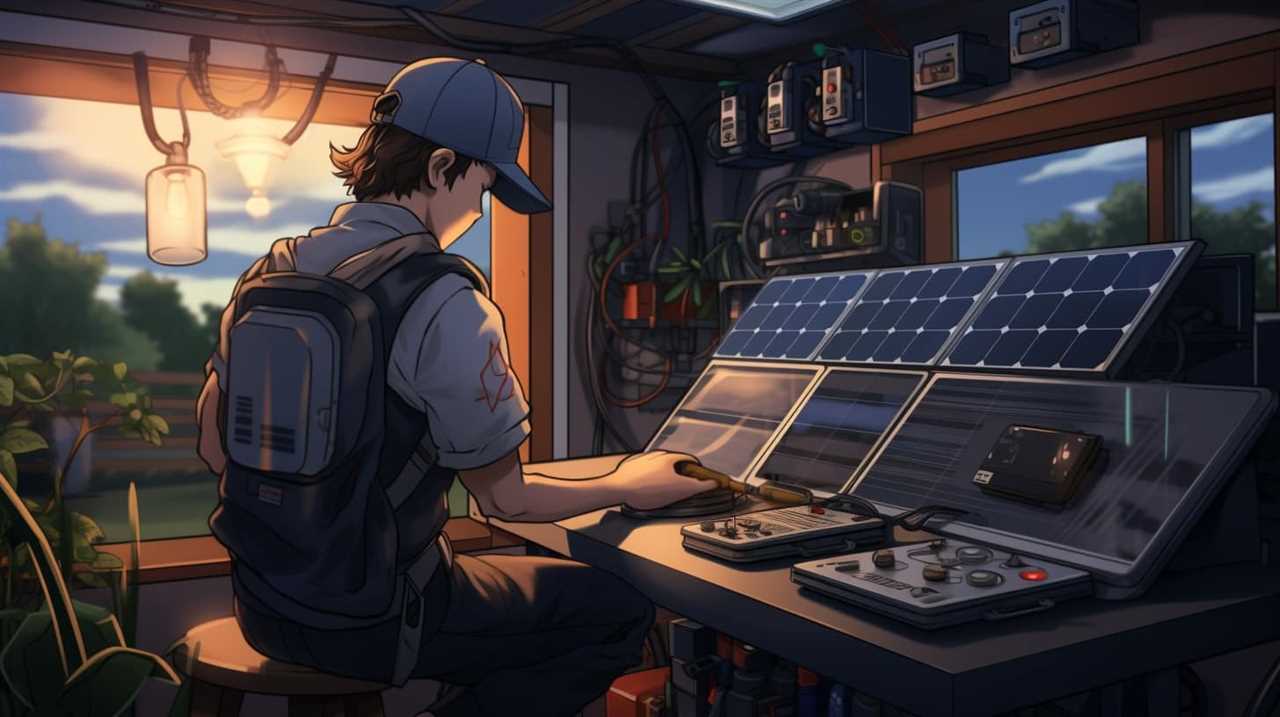
Clearwater, located on the west coast of Florida, offers a vibrant coastal lifestyle combined with the charm of a small community. This picturesque city is known for its stunning beaches, including the famous Clearwater Beach, which has been consistently ranked as one of the best beaches in the United States.
Living in a tiny home in Clearwater allows us to fully embrace the coastal lifestyle, with easy access to outdoor activities such as boating, fishing, and water sports.
Additionally, Clearwater offers a variety of dining and entertainment options, ensuring that there’s always something to do in this tiny home paradise.
Frequently Asked Questions
Are There Any Zoning Restrictions for Tiny Homes in These Cities?
There may be zoning restrictions for tiny homes in these cities. It is important to research the specific zoning regulations and building codes in each city before considering housing a tiny home there.

What Are the Average Costs of Tiny Homes in These Cities?
The average costs of tiny homes in these cities vary depending on factors such as location and size. Additionally, the time it takes to build a tiny home can also vary, with some taking a few weeks to several months to complete.
Are There Any Communities or Neighborhoods Specifically Designed for Tiny Homes?
There are communities and neighborhoods specifically designed for tiny homes, such as the tiny home village concept and co-housing for tiny home communities. These provide a sense of community and support for tiny home owners.
What Are the Available Financing Options for Purchasing a Tiny Home in These Cities?
There are various financing options available for purchasing a tiny home in these cities. Additionally, alternative housing options for individuals in these cities can provide more affordable and sustainable living solutions.
Are There Any Local Resources or Workshops Available for Individuals Interested in Building Their Own Tiny Home in These Cities?
Yes, there are local workshops and resources available for individuals interested in building their own tiny home in these cities. These resources provide valuable guidance and support throughout the building process.
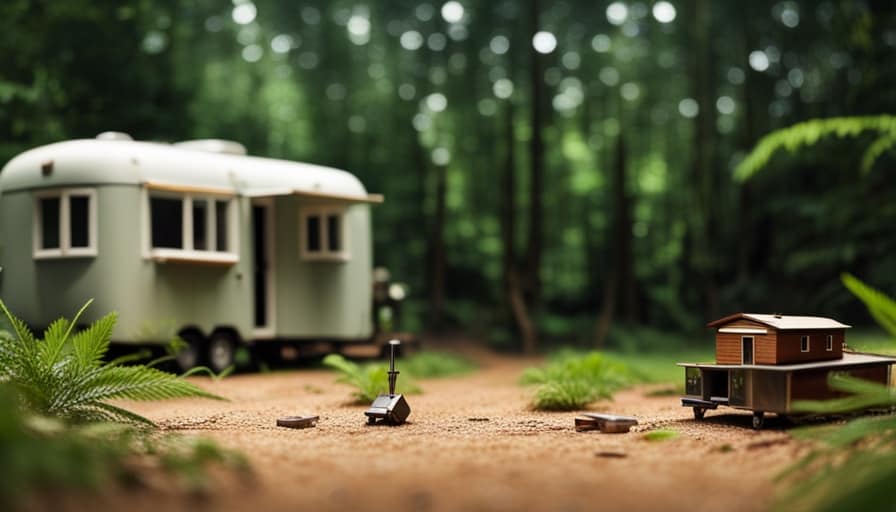
Conclusion
In conclusion, these ten cities offer an array of opportunities for those seeking the tiny home lifestyle. From the thriving arts scene in Portland to the scenic retreat of Sheridan, each city provides a unique atmosphere and charm.
Whether you crave coastal living in Clearwater or want to explore the beauty of the Rocky Mountains in Colorado Springs, there’s a tiny home paradise waiting for you.
So why wait? Start your tiny living adventure today and discover the endless possibilities that await.
I’m Theodore, and I love tiny houses. In fact, I’m the author of Tiny House 43, a book about tiny houses that are also tree houses. I think they’re magical places where imaginations can run wild and adventures are just waiting to happen.
While tree houses are often associated with childhood, they can be the perfect adult retreat. They offer a cozy space to relax and unwind, surrounded by nature. And since they’re typically built on stilts or raised platforms, they offer stunning views that traditional homes simply can’t match.
If you’re looking for a unique and romantic getaway, a tree house tiny house might just be the perfect option.
